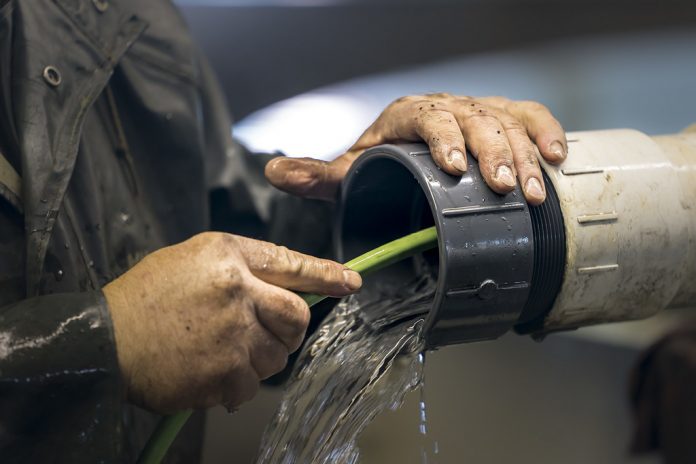Plumbing maintenance
You may prevent plumbing difficulties by being aware of the problems and carrying out preventative maintenance. The first step in preventive care is comprehending each water system element. Every appliance uses water in your home that consumes water, including sinks in bathrooms, kitchens, and utility rooms, washing machines, refrigerators, trash disposals, and water heaters. To keep plumbing issues under control, all of these may be maintained.
What tasks does a plumber complete during a maintenance visit?
A maintenance appointment’s objective is to thoroughly examine your home’s plumbing system and search for potential issues. The plumber can offer advice on how to resolve any problems that are found.
Why should you care about plumbing upkeep?
Maintaining your home’s plumbing is crucial to maintaining clean water flowing in and getting the trash out of your house. Most individuals don’t consider their plumbing unless there is an issue. But by then, they have a significant problem and sizable expenses. You should do routine plumbing maintenance to identify minor issues before they grow into costly, essential issues. You might save money on your water and energy bills by doing maintenance.
Lots of water can be lost by one minor leak. It accumulates as the water drips out one at a time. One liter of water can be wasted with just 4,000 drops. A single faucet in your house can drip one drop every minute, which adds up to around 1,440 drips per day and 34 gallons each year! Home damage from plumbing leaks can also compromise your pipes and water pressure. Undiscovered leaks in walls or under sinks can cause pipe corrosion, wood rot, and mold growth.
A frozen pipe that bursts could result in a flooded room. Ensure your home’s plumbing system functions correctly to avoid plumbing issues, reduce energy expenses, and conserve water for future generations. If a problem arises, you must address it right away.
Read More: What to look for when buying glass food storage containers
Useful Plumbing Maintenance Tips
Every homeowner occasionally encounters a plumbing issue. Here are eight pieces of advice for maintaining good plumbing in your home. Your home’s plumbing is a sophisticated system that takes fresh water, warms it for washing, and distributes it all around the structure. Until anything goes wrong, it’s easy to take everyone’s access to clean water and sanitary facilities for granted.
Fortunately, maintaining your plumbing is not too difficult if you want to keep most typical problems at bay, like leaks, clogs, and damaged and rusty pipes. Sinks and toilets can last for decades, as will most fixtures.
1. Utilize food coloring to look for tank leaks
You can make sure by putting red food coloring in the tank and waiting an hour. To stop water from seeping out and reduce your water cost, you must replace the tank ball if it has already spilled into the bowl by that time.
2. Use Soap to Unclog a Blocked Toilet
To unclog a toilet, you don’t need one. You may frequently remove the obstruction by pouring hot water and soap into the bowl. After getting the water from the tap as hot as possible, fill the basin as much as possible. Don’t be scared to add liquid soap; you can never add too much. The warm water will facilitate breakdown.
3. Do a Water Heater Flush
Your water heater has to be flushed about once a year because mineral particles can gather there. It will produce banging noises if it needs to be washed urgently. That is water from behind a heavy layer of silt at the tank’s bottom. The tank may rust out if sediment buildup is not frequently cleansed.
Your water heater’s anode rod has to be replaced every five years, and you should flush it once a year. If you take proper care of a water heater, it may last a very long period.
4. Look for leaks regularly
Water bills from running toilets and dripping faucets can climb into the hundreds. They are typically simple to fix and can help you save money. Maintain a diligent repair schedule. Corroded and rusted-out pipes are only two examples of plumbing leaks reasons that don’t occur all at once. Check your home’s exposed pipes frequently for indications of deterioration or damage. A skilled plumber should take care of the issue if rust, warping, or water droplets are on the pipe’s exterior.
Because you rely on your home’s plumbing every day, take the time to do routine maintenance. Simple maintenance may help prevent blockages, reduce leaks, and minimize water damage in your plumbing system. You’ll feel more secure if an American Home Shield home warranty covers your home. We include plumbing system elements and components in our blueprints to prepare you for unforeseen events.
5. Avoid flushing that
Toilet paper and trash are the only items you should flush down the toilet. Toilet bowls are not trash cans. Therefore, sanitary items, cotton swabs, plastic, hair, and cardboard can build up and clog the pipes. Install a wastebasket in the bathroom and use it unless you want to spend a lot of money for a plumber to extract a very unpleasant surprise from your sewage system.











